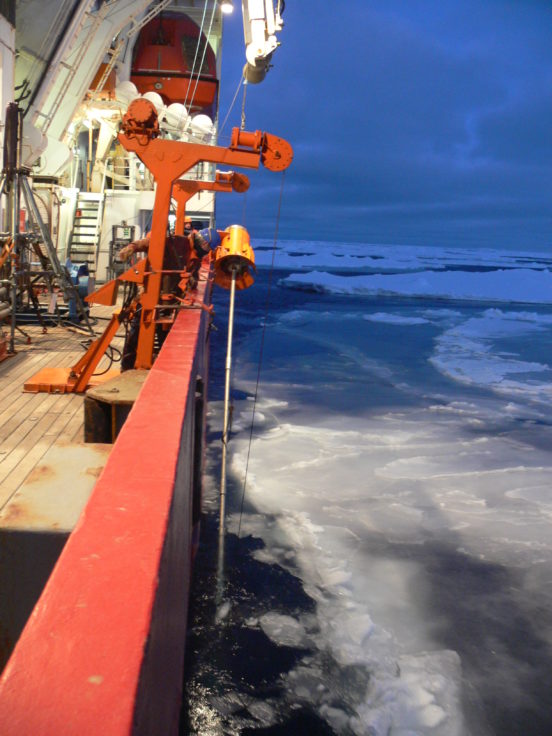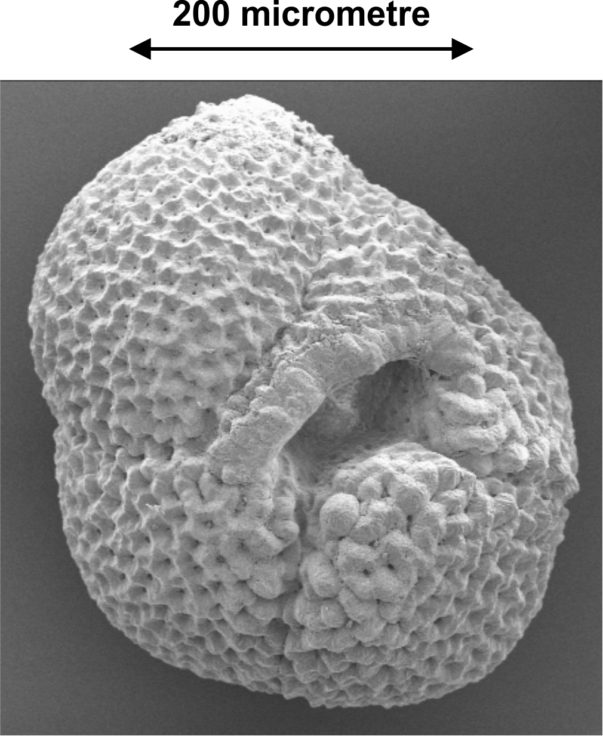NEWS STORY: Oxygen depletion in the upper waters of the Southern Ocean during glacial periods
Research published this week by an international team of scientists, including the British Antarctic Survey, provides new insights into how carbon dioxide changed in the oceans surrounding Antarctica during glacial periods.
Although scientists have generally agreed that atmospheric carbon dioxide was drawn down and locked up in the deep ocean during ice ages, quantitative measures of how much was stored have previously been hard to come by.

Reporting in the Journal Nature Communications the team describe a study of the carbonate shells of tiny ocean-dwelling organisms, foraminifera, preserved in sediments covering an underwater mountain beneath the Amundsen Sea close to Antarctica. The researchers conclude that the amount of atmospheric CO2 released from the Southern Ocean during warm periods was reduced during ice ages.

Foraminifera dwelling in the ocean build their shells using elements from the seawater so the chemical composition of ancient foraminifera shells can be used to estimate the composition of ocean waters in the past. The new study demonstrates that the ratio of iodine to calcium in the shells is an indicator of oceanic oxygen levels. Data from the Amundsen Sea show that during ice ages surface waters of the Southern Ocean had low levels of oxygen. Because these waters are directly connected to deep waters derived from surrounding ocean basins and upwelling around Antarctica the researchers conclude that the oxygen levels in these deep waters must have been reduced during glacial times. Low oxygen levels in seawater are associated with high carbon dioxide concentrations. Therefore, the new findings imply that the release of CO2 into the atmosphere within the Southern Ocean was reduced during ice ages and that more CO2 was trapped in the deep ocean, potentially explaining the lowering of atmospheric CO2 during these times.

Co-author Claus-Dieter Hillenbrand of the British Antarctic Survey says,
“Physical, chemical and biological changes in the World Ocean in general, and in the Southern Ocean in particular, played a crucial role in controlling atmospheric carbon dioxide, and the transition from glacial to interglacial conditions. Our findings are an important step forward in explaining natural climate changes and predicting for how present-day warming might influence future change in the marine environment.”
ENDS
The paper: “Oxygen depletion in upper waters of the glacial Southern Ocean” is published in Nature Communications, doi: 10.1038/NCOMMS11146
Authors
Zunli Lu1*, Babette A.A. Hoogakker2, Claus-Dieter Hillenbrand3, Xiaoli Zhou1, Ellen Thomas4,
Kristina M. Gutchess1, Wanyi Lu1, Luke Jones2 & Rosalind E.M. Rickaby2
1 Department of Earth Sciences, Syracuse University, Syracuse, New York 13244, USA.
2 Department of Earth Sciences, University of Oxford, Oxford OX1 3AN, UK.
3 British Antarctic Survey, Cambridge CB3 0ET, UK.
4 Department of Geology and Geophysics, Yale University, New Haven, Connecticut, USA.